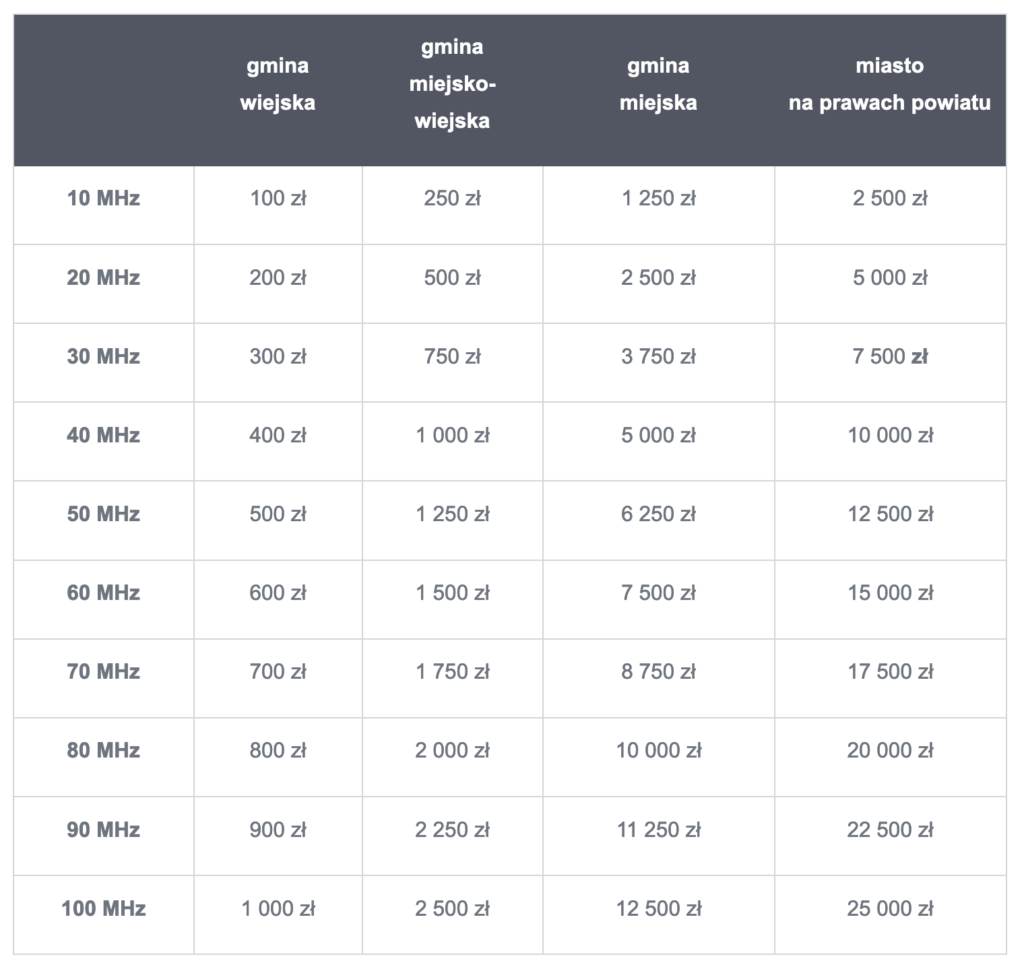The Polish government has released the 3800-4200 MHz (3.8-4.2 GHz) frequency band to cities and enterprises for private LTE and 5G network deployments. The Office of Electronic Communications (UKE) has allocated the 3800-3900 MHz band for use by local governments exclusively, which can apply for the entire 100 MHz provision. Enterprises and “other entities” can licence up to 100 MHz at 3900-4200 MHz.
Local government in Poland is organised at three tiers, across 16 regions, 314 counties, and 2,478 municipalities. Local authorities can now apply for spectrum in 10 MHz blocks, up to 100 MHz. They are limited to local licences in a maximum of 20 municipalities if they are offering public 5G services.
The limit does not apply if they are registering spectrum for private services, for use by municipal services and local enterprises (“for their own needs”); in these cases they can take 3800-3900 MHz licences in as many jurisdictions as they want. A one-time fee of PLN 1,939 (zloty; €418 / $444) applies for public network licences; a one-time fee of PLN 82 (€18 / $19) applies for private network deployments. Annual licence fees are paid on top of the ‘stamp duty’ costs.
These are set at: PLN 100 (€22 / $23) per 10 MHz block for ‘rural community’ (gmina wiejska) deployments (up to PLN 1,000 for the full 100 MHz); PLN 250 (€54 / $57) per 10 MHz block for urban-rural community (gmina miejsko-wiejska) deployments (up to PLN 2,500); PLN 1,250 (€270 / $286) per 10 MHz block for urban community deployments (up to PLN 12,500); and PLN 2,500 (€539 / $572) per 10 MHz block for city / district deployments (up to PLN 25,000). It is unclear how these municipal fees square with enterprise rates.
Permits will be issued on a first-come / first-served basis, said UKE; licences will only cover use of low or medium power LTE/5G base stations – granted, respectively, to support any number of stations in a radius of up to 50 metres or to cover a single station. Mid-power outdoor radios stations are not allowed in the 4000-4200 MHz range in order to protect usage of radio altimeters in aviation above 4200 MHz.

Private networks are often indicated as those whose development will be accelerated thanks to the 5G technology, which – thanks to low delays in the radio part and edge computing – are predisposed to applications in private networks, and in particular support industrial automation, city metering, and local logistics . At the same time, they allow for more efficient management of machines and can make the lives of local communities more effective.
UKE is granting local test licences, as well, for a period of up to a year. The regulation was published on September 15. The new UKE management plan is available here (in Polish); commentary from Paweł Deoniziak, in charge of the radio department at UKE, is available here (also in Polish).
Deoniziak commented: “Private networks are typically slated for use with 5G technology, which – thanks to low latency in the radio part, and edge computing – are predisposed to… support industrial automation, city metering, and local logistics. At the same time, they allow for more efficient management of machines and can make the lives of local communities more effective.”

